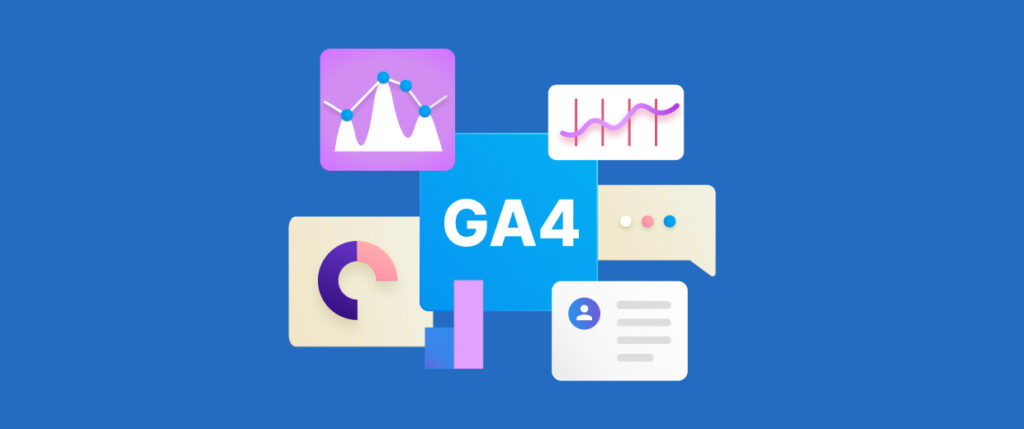In the ever-evolving digital landscape, data-driven growth marketing is key to staying ahead of the competition. As a marketing manager or CMO, it’s essential to be aware of the latest tools and strategies that can propel your business forward. One such game-changing update is Google Analytics 4 (GA4), a hot topic in the world of digital marketing. In this article, we’ll explore why you should consider migrating to GA4, its benefits and drawbacks, and how to implement it effectively for your business.
1. Why should marketing managers and CMOs have a migration to GA4 on their list?
Google Analytics 4 is the future of web analytics, and it’s designed to provide a more holistic and user-centric view of your audience’s behavior. Migrating to GA4 is essential for marketing managers and CMOs for several reasons:
- Future-proofing your business: Google has made it clear that GA4 is the future of their analytics platform. By adopting GA4, you ensure your business is ready for upcoming changes and features.
- Enhanced privacy and compliance: GA4 is designed to be more privacy-centric, allowing you to comply with data privacy regulations more effectively.
- Better insights and decision-making: GA4’s new features, such as advanced analysis and machine learning, provide deeper insights that can help you make better-informed marketing decisions.
2. What is new in GA4?
GA4 comes with several new features and improvements that will help you gain a better understanding of your audience:
- Improved data modeling: GA4 uses event-based tracking, providing more granularity and flexibility in tracking user interactions.
- Cross-platform tracking: GA4 can track both web and app interactions in a single property, making it easier to understand user behavior across different platforms.
- Advanced analysis techniques: GA4 offers new analysis tools, such as cohort analysis and path analysis, to help you uncover insights and trends.
- Enhanced automation: GA4 utilizes machine learning to surface relevant insights and predictions, such as churn probability and potential revenue.
3. What are the cons of GA4?
Despite its advantages, GA4 does have some drawbacks to consider:
- Learning curve: GA4’s new interface and features require some time to learn and adapt to.
- Data discrepancies: There may be differences in data between GA4 and the older Universal Analytics, making comparisons challenging.
- Limited integrations: Some third-party tools and platforms may not yet be fully compatible with GA4.
4. A part on the proper tagging (and the hate-love camp)
Proper tagging is essential for accurate data collection in GA4. With GA4’s event-based tracking, you’ll have more control over what data is collected and how it’s organized. This can lead to a hate-love relationship, as some marketers may feel overwhelmed by the complexity, while others will appreciate the increased flexibility.
To ensure proper tagging, it’s crucial to have a clear plan and to work closely with your development team or marketing agency. This includes defining the events and parameters you want to track and setting up the necessary tracking code.
5. How to brief your marketing agency on implementing GA4? (and how we help clients with this)
When briefing your marketing agency on implementing GA4, it’s essential to communicate your business goals, key performance indicators (KPIs), and desired tracking events. Here at The Growth Agency, we help our clients by:
- Providing expert guidance on GA4 features and best practices.
- Collaborating on a tracking plan that aligns with your business goals.
- Implementing the necessary tracking code and configurations.
- Offering ongoing support and training to ensure you get the most out of GA4.
6. How long will an implementation take?
The time required for a GA4 implementation depends on various factors, such as the complexity of your website or app, the number of custom events you need to track, and the resources available. Generally, a basic GA4 implementation can take anywhere from a few days to a couple of weeks. However, more complex implementations may require several weeks or even months.
At The Growth Agency, we work closely with our clients to ensure a smooth and efficient implementation process, minimizing downtime and disruption to your business.
7. How to prepare for a GA4 implementation?
To ensure a successful GA4 implementation, follow these steps:
- Audit your current analytics setup: Review your existing tracking configuration to identify gaps and areas for improvement.
- Define your tracking plan: Work with your team or marketing agency to outline the events, parameters, and goals you want to track in GA4.
- Allocate resources: Ensure your development team or marketing agency has the necessary resources and expertise to handle the implementation.
- Plan for data continuity: Consider running GA4 alongside your existing Universal Analytics setup to maintain historical data and facilitate comparisons.
8. Will AI be coming next to Google Analytics?
AI and machine learning are already part of Google Analytics 4, with features like automated insights and predictive metrics. As the platform evolves, we can expect AI to play an even more significant role in enhancing the user experience and providing actionable insights. Businesses that leverage AI-driven analytics will be better equipped to make data-informed decisions and stay ahead of the competition.
Conclusion
Migrating to Google Analytics 4 is a crucial step for marketing managers and CMOs looking to future-proof their businesses and gain a competitive edge. By understanding the benefits, drawbacks, and implementation process, you can make an informed decision about adopting GA4 for your organization. At The Growth Agency, we’re here to guide you through this transition, ensuring you get the most out of this powerful analytics tool. Reach out to our team of experts to discuss how we can help you harness the power of GA4 and drive data-driven growth for your business.


